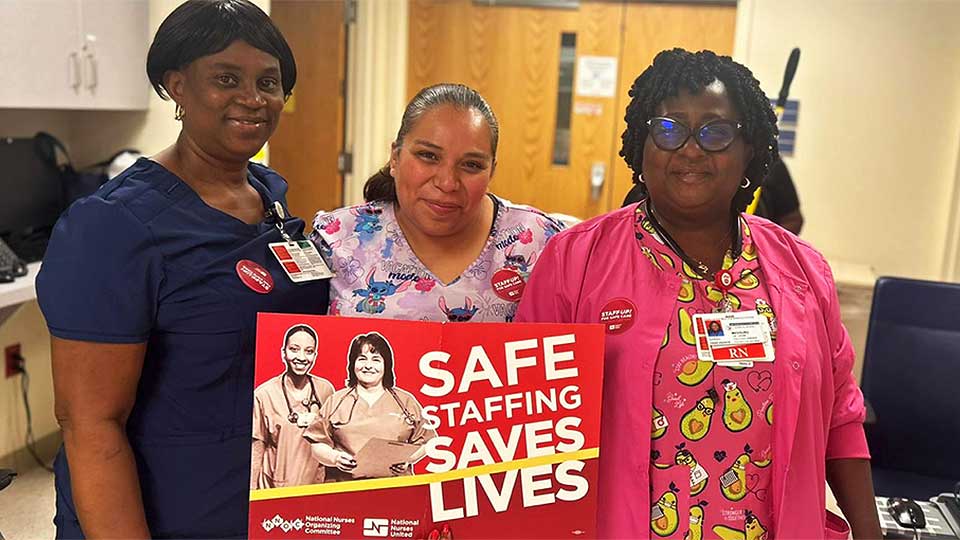
CHICAGO—Nurses brought their state-by-state drive for safe staffing ratios at the bedside to Illinois on October 3, with the Illinois Nurses Association/National Nurses United leading the way.
In a state legislative hearing in Chicago, the 6,000-member union joined the state AFL-CIO, Teamsters Local 743, the Chicago Black Nurses Association, and SEIU Health Care in pushing state lawmakers to craft and enact such legislation.
Safe staffing has been a top NNU cause, along with Medicare for All, for NNU and its state affiliates for decades. It’s succeeded in its home state, California, as well as in New York and several other states, but has been stymied on Capitol Hill. There were hearings on it, but no more, in the prior Democratic-run House. And nothing since the GOP takeover, though Rep. Jan Schakowsky, D-Ill., keeps pushing it.
In D.C., corporate special interests and their clout and campaign contributions have stymied safe staffing laws. The extremely rich and heavyweight health insurers lead the way, with the Chambers of Commerce joining in.
The insurers make money through high premiums, co-pays, and deductibles, sucking consumers dry while paying only the minimum they can get away with for care. But they also rake in cash by forcing hospitals to cut costs—and that means cutting care, including nurses.
So the union has simultaneously turned to the states—and run into similar flak.
“Our hospitals are refusing to hire the appropriate number of nurses required to safely care for our patients,” Brenda Langford, RN, at Cook County Hospital in Chicago, while arguing for the proposed Illinois Safe Patients Limits Act (SB2314, HB3338) crafted with NNU by State Sen. Teresa Villanueva and State Rep. Teresa Mah, both D-Chicago.
“It’s life-threatening to patients and dangerous for nurses, who experience increased workplace violence and injury while understaffed. That’s why nurses across Illinois healthcare facilities and nursing homes are striking. We can’t allow our patients’ health to be put at risk,” Langford added.
The proposed Illinois law does not set specific limits or nurse-patient ratios, leaving that decision up to state regulators, an NNU fact sheet on the legislation shows. In California, however, the NNU-passed safe staffing law set a 1:2 nurse-patient ratio in intensive care units, with slightly higher ratios for other types of hospital wards.
Though the Illinois nurses did not mention it, the New York safe staffing law became a key pro-worker element in settling the recent New York State Nurses Association strike at New York City hospitals. Pay was one top issue, but safe staffing topped even that.
There, the hospitals refused to bargain with NYSNA—until Gov. Kathy Hochul (D) threatened to send in state health inspectors to see if the hospitals met the Empire State’s new ratios law. The hospitals quickly settled.
Without a similar Illinois law, “qualified, licensed nurses leave their jobs at the bedside because their licenses and their patients are being put at risk by these staffing practices,” Langford told lawmakers.
“We need the Safe Patient Limits Act to keep more nurses at the bedside. The law mandating nurse-to-patient ratios has worked in California for years, and it will work here in Illinois. Our patients deserve nothing less.”












Comments